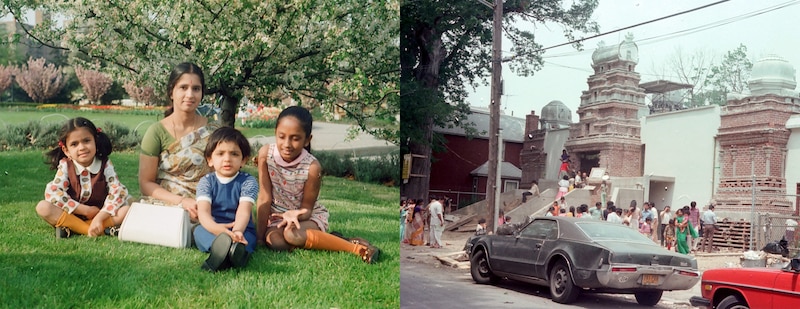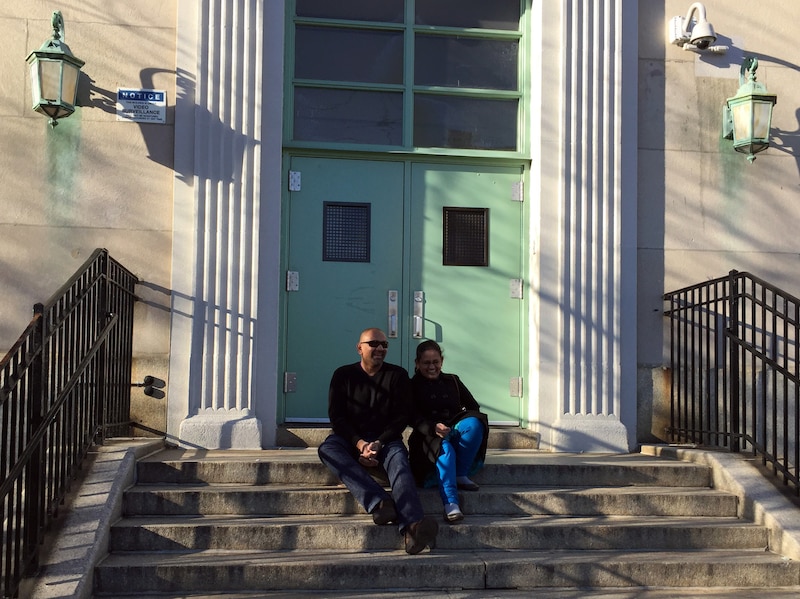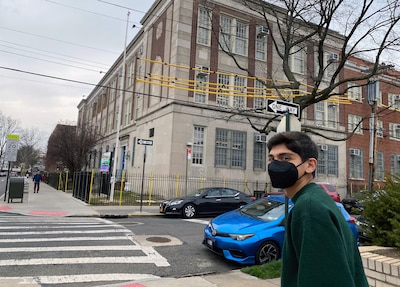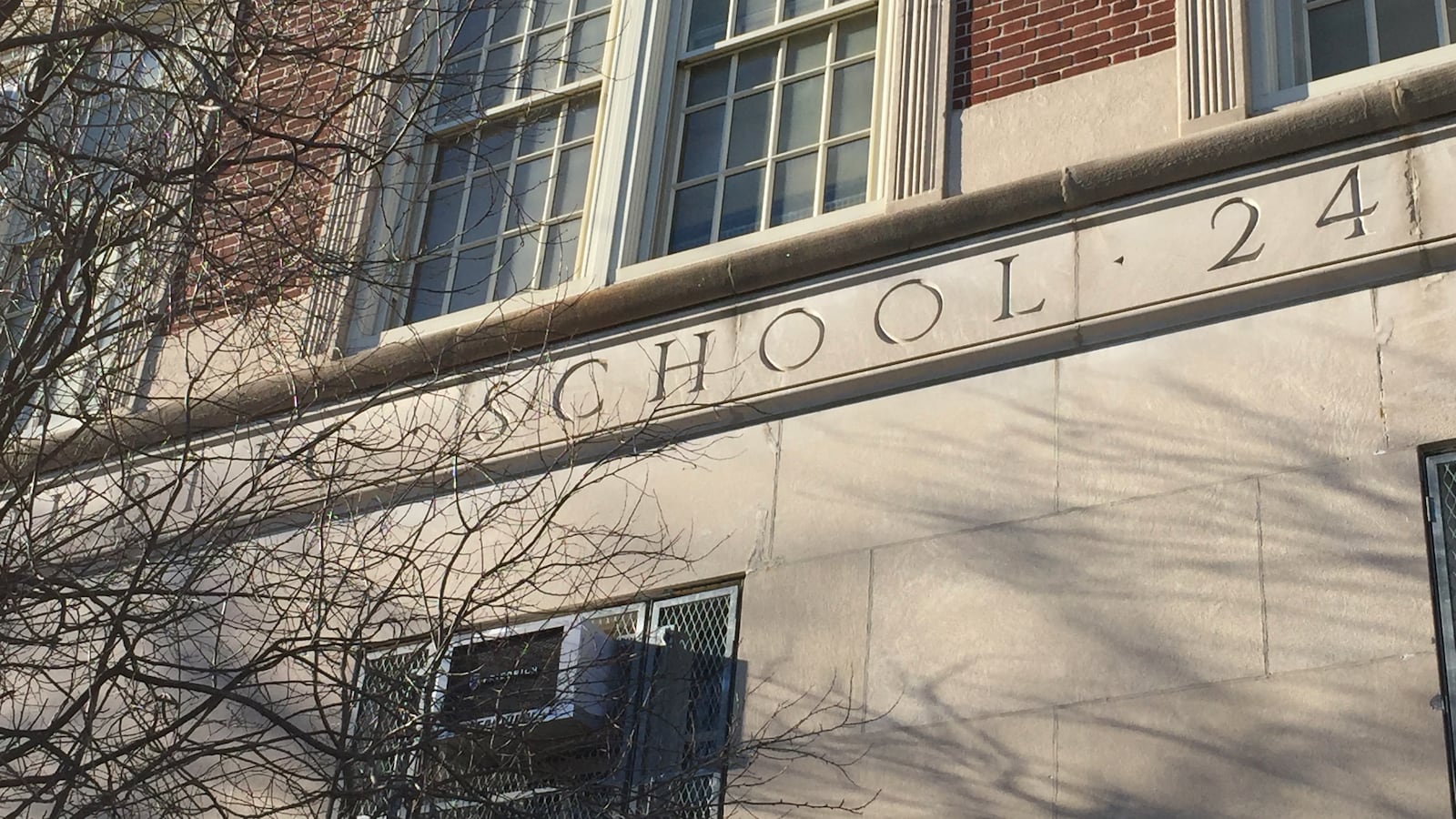On a spring break trip to New York City this year, just before I started working at Chalkbeat, I had a chance to take my 16-year-old son on a tour of Flushing, the neighborhood in Queens that was my immigrant family’s first home in America.
Stops on the tour included the Chinatown markets along Main Street at the end of the No. 7 line, the unsung Unisphere sculpture in Flushing Meadows Corona Park, our 15-story apartment building on Colden Street, the pioneering Hindu temple where we worshiped, and the Queens Botanical Gardens, our communal backyard.
My son was treated to stories about the time I cut my eyelid on a rusty swing in the playground behind our building, and the man on Kissena Boulevard who would bark “Go back to India!” at my mom when she was on her way to shop at Waldbaum’s.
But no Anantharaman family reality tour would be complete without at least a peek at Public School No. 24, that New Deal-era giant on Union Street.

I say giant because while I spent just three years there, it was an outsize force in my childhood and my life — the place where I first glued a thing called macaroni onto construction paper, sang songs about ducks and dreidels, chucked a Pinkie ball against a brick wall, and recited the Pledge of Allegiance with hand on heart.
For my family, P.S. 24 was the promise of America delivered, a public school that was free and open to everyone in the neighborhood. It was where we learned to be Americans.
It’s also where we observed how deeply the seeds of inequity were embedded in this free and open system. One enduring memory is the academic tracking that sorted the students into four sections, like an educational caste system, based on their perceived ability. It began in first grade and continued through high school, with little chance for mobility between tracks, perpetuating various types of segregation.
My first grade classroom was itself a segregated neighborhood, with faster-reading, faster-adding students in assigned seats on one side of the room, and the rest of the class clustered on the other side.
As early as age 6 or 7, children developed a sense of where they stood in the hierarchy, even if they didn’t fully understand the implications of it. And each school day, each school year, the distance between the tracks widened.
Forty-plus years later, my older sisters and I look back on our years at P.S. 24 with a mix of gratitude for the aspirations it made possible, and discomfort over the thought that many other students saw their aspirations suppressed in that same building.

Outside P.S. 24 with my son that day, so many odd reminiscences spilled out that at one point, as we passed a set of green steel doors facing Holly Avenue, he jokingly asked me whether I had any memories of that particular entrance.
In fact, I did.
In second grade, I told him, my friend Paul and I rode the school bus together and would get dropped off at that Holly Avenue entrance well before the school day started. Then the bus went out for a second run. While the other bused-in students waited in a first-floor classroom for the morning bell, Paul and I were assigned to look out the window and be ready for when the bus returned.
We whiled away the time talking about “Star Wars” and the contents of our lunchboxes. But when that bus arrived, it was our job to push those heavy doors and hold them open for the second busload, until the last child was safely inside.
My son listened patiently and moved on. But my mind lingered on the memory.

Our break week together was almost over, and I was four days away from starting my new job as a story editor for Chalkbeat, a news organization dedicated to the proposition that all children deserve an equitable, quality education.
I thought about all the children who stepped off the school bus and walked through those doors together, and how markedly their paths diverged once they went inside.
My own path eventually took me to public school in the New Jersey suburbs, a journalism degree and a long career in the news industry as an editor — 31 years now. For 13 of those years, I oversaw an educational publication that helped high school teachers incorporate the news into their curriculum.
P.S. 24 remains an outsize presence in my life, and now it looms over my work. I don’t for a moment presume that what I observed in elementary school decades ago encapsulates the challenges facing education today. But each visit to the old block reminds me that the education I received was a profound gift. And it serves as an inspiration to see — however I can as a journalist and storyteller — that the promise of an equitable, quality education is available to every child.
Krishnan Anantharaman is the story editor for Chalkbeat’s Detroit and Tennessee bureaus.


